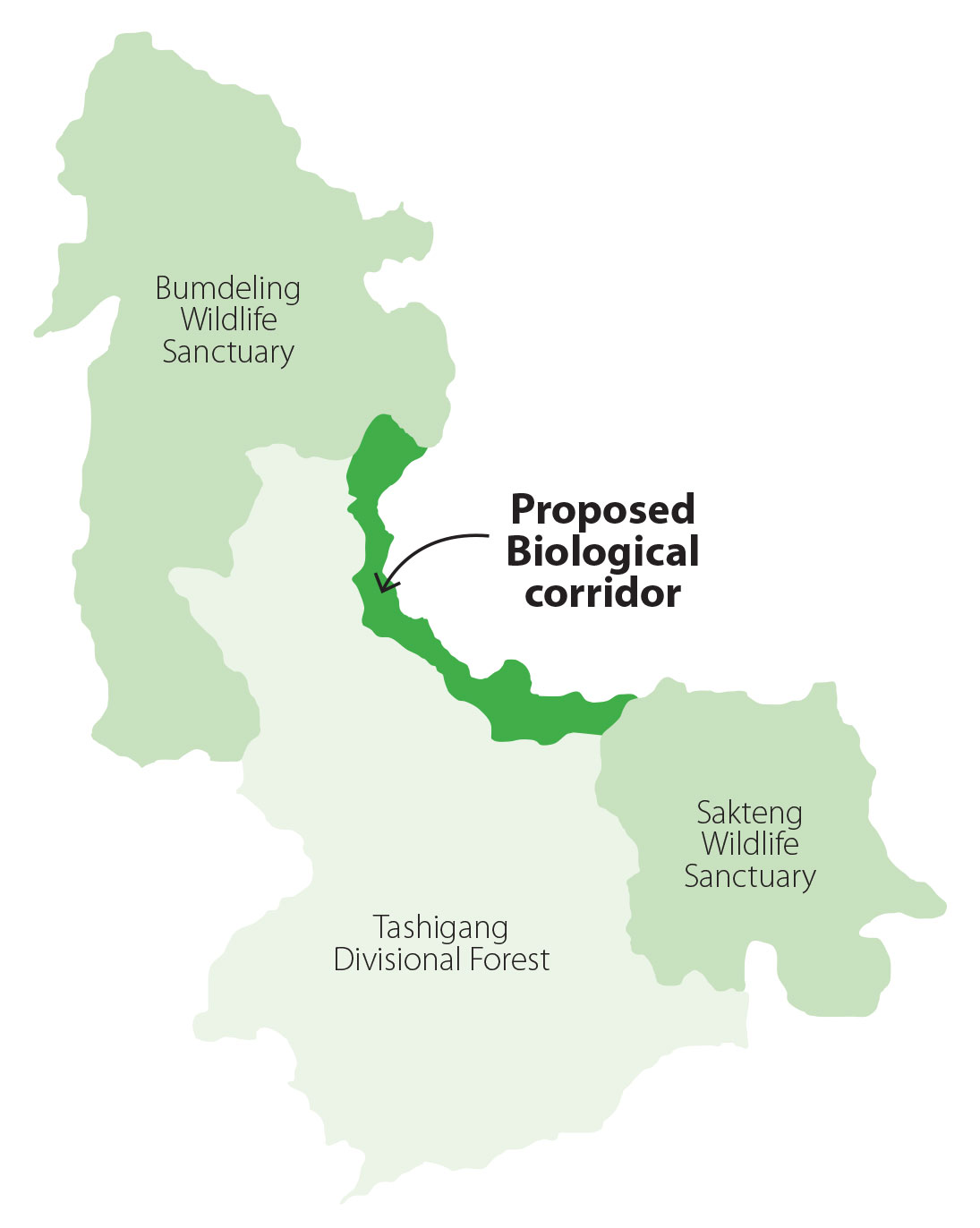… the proposed corridor will be deliberated next week
YK Poudel
National Council members grilled the Energy and Natural Resources Minister Loknath Sharma with numerous concerns after he introduced the Biological Corridor (BC) Bill in the House on October 4.
The proposed corridor connects Bumdeling Wildlife Sanctuary (BWS) and Sakteng Wildlife Sanctuary (SWS).
NC members raised concerns about human-wildlife conflicts, restrictions on development activities, restrictions on land use and harmonisation of the Bill with existing relevant Acts such as the Forest and Nature Conservation Act and Biodiversity Act of Bhutan 2021.
The members questioned how the declaration of the biological corridor would support the livelihood of people living within 3.8 percent of the corridor.
This addition of a biological corridor increases Bhutan’s protected area coverage to 52 percent from the existing coverage of 51.44 percent of the country’s geographical area. The proposed corridor of 216 square km stretching over 60.2km would pass through parts of Toedtsho, Yalang, Khamdang, Bumdeling, and Yangtse gewogs in Trashiyangtse, and Phongmey gewog in Trashigang.
A total of 363 households are living in Bumdelling, Toedtsho, and Yalang gewogs in Trashiyangtse falling within the proposed corridor.
Lyonpo Loknath Sharma said that regardless of proximity, similar climate, habitat composition and biodiversity, currently there has been no designated biological corridor to protect and provide the needed landscape connectivity between SWS and BWS.
“Consequently, Bhutan Biological Corridor Complex (B2C2) circuits in the landscape of eastern Bhutan remain incomplete,” he said.
The proposal, lyonpo said, was not to harm the residents but an attempt to provide ecological connectivity between BWS and SWS. “They can do the activities they have been doing. In addition, we will put in efforts to support them to start ecotourism, community tourism, homestays, and campsites that would benefit the local residents.”
Lyonpo said that people can continue to gather non-wood forest products for income and use timber and stones for construction, but starting new commercial activities is not permitted.
According to the minister, there may be negative impacts such as increased human-wildlife conflicts but the conservation funds obtained would help reduce the impacts.
“Moreover, Bhutan must make good use of the natural resources and generate revenue for environmental projects instead of external grants for all times,” he said.
The rapid biodiversity assessment states that there are 124 species of birds, 25 species of mammals and 227 species of plants in the proposed area.
Some of the globally-important species recorded in the landscape include clouded leopard, Royal Bengal tiger, Himalayan red panda, and musk deer, among many others.
The BC9 in the east would cover six gewogs in Trashigang and Trashiyangtse. Of the six gewogs, a survey revealed that there are no settlements in the proposed BC area in Khamdang, and Trashiyangtse gewogs in Trashiyangtse, and Phongmey gewog in Trashigang.
The BC is expected to ensure animal movement and genetic dispersion in BWS and SWS and benefit in securing conservation funds, among others.
The BC9 is the first BC in the extreme east and will complete the Bhutan Biological Corridor Complex (B2C2).
The NA adopted the declaration of the eastern biological corridor on June 15 this year.


